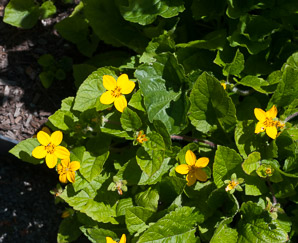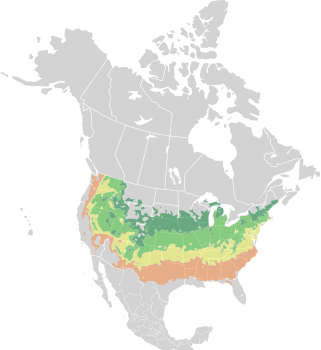
|
Chrysogonum virginianum ‘Allen Bush’ Green and gold
This is a cultivar of golden star. The natural species is a North American native. It is a low ground cover with showy flowers. Identification: Plants are less than 8″ (20 cm) in height (more compact than the native species), spreading via underground stolons to form mats. Leaves are hairy, alternate, roughly egg-shaped (elliptic-ovate to deltate-ovate), ⅞-4″ (2.5-10 cm) long, with crenate margins. Flowers are composite flowers—composed of a central yellow circle of 25-50 disc florets surrounded by 5 yellow ray flowers. This cultivar has many more flowers than the native species. They bloom from March to June. Online References:
Discover Life (Chrysogonum virginianum) Www.jeffpippen.com (Chrysogonum virginianum) The Lady Bird Johnson Wildflower Center (Chrysogonum virginianum)
Chrysogonum virginianum ‘Allen Bush’ description by Thomas H. Kent, last updated 25 May 2020. © FloraFinder.org. All rights reserved. |
6/17/2012 · Coastal Maine Botanical Gardens, Boothbay, Maine · ≈ 14 × 9″ (35 × 23 cm) Range: Zones 5a-8b:
|



